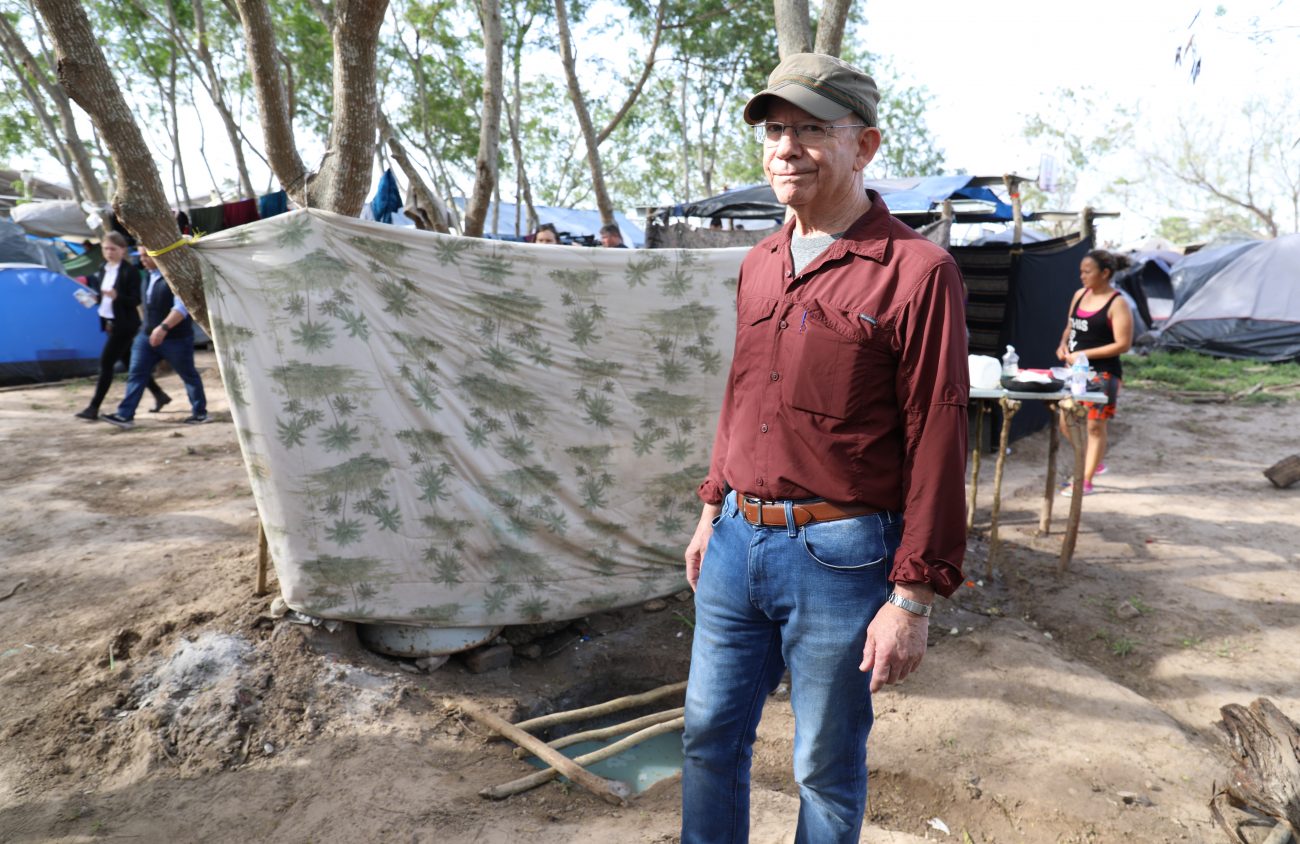Last week, Rep. Peter DeFazio visited the U.S.-Mexico border to investigate the Trump administration’s Remain in Mexico policy, which forces people seeking asylum in the U.S. to camp in tents along the border in a crime-filled city.
The trip brought DeFazio and Oregon District 1 Rep. Suzanne Bonamici to two cities: Brownsville, Texas, near the Mexican border, and Matamoros, Mexico, where refugees seeking asylum in America are camping in tents, awaiting trials to know whether they will be allowed to enter the U.S. An estimated 3,000 individuals live in tents clustered together as they await their trial, making it the largest camp of its kind on the border.
In an interview with Eugene Weekly, DeFazio called the conditions of the camp “deplorable.” During the several hours of his visit, the congressman and his team were escorted through the area by a missionary nun from Spain. He describes seeing open latrines and sewage near the Rio Grande river. Although DeFazio’s visit was dry, he says, there is unbelievable mud everywhere when it rains, especially by the steep riverbank.
“People had fallen in and drowned,” DeFazio says. “I can’t imagine what it’s like when it’s raining.”
DeFazio adds that in addition to environmental factors, Matamoros is not a safe city for refugees to be living in tents. The U.S. Department of State currently has the city at a level four travel advisory — meaning U.S. citizens should not go there — due to kidnappings and other crimes including gun battles, murder and armed robbery.
“It’s essentially run by the cartel,” DeFazio says.
The camps have been affected firsthand by these crimes. Children have been kidnapped, he says, and most likely forced into sex trafficking. The camp has also been robbed.
DeFazio tells of a woman from El Salvador seeking asylum with her three daughters. He says the mother would sleep outside the tent on the tent’s zipper to protect her children.
“It’s just outrageous,” he says of the camp conditions.
Under the Remain in Mexico policy, the asylum seekers can’t see their paperwork until one hour before their hearing, he says. When it’s their day, they get to the border at 4 am, stand in line and meet their lawyer for the first time before their video court hearing.
During his visit, DeFazio had the opportunity to observe a trial, where a judge was confused because a young couple was asking for passage to Canada. The couple said they had a sponsor in Canada, and they only seeking asylum to go through the U.S. Because of the confusion, they had to adjourn.
“We never found out the end of it,” DeFazio says.
He also came across a woman who wasn’t speaking Spanish. Although the majority of those camped on the border are from Central and South America, he realized out the woman was from the Democratic Republic of the Congo and spoke French.
“I thought, do they have French interpreters here?”
After seeing the aftermath of the Remain in Mexico policy, the congressman recalls the Obama-era program, where all asylum seekers, especially those of vulnerable populations, have sponsors to help educate them on their rights and responsibilities. These refugees were then released and allowed in the U.S. under parole.
DeFazio adds that the former program actually saved the taxpayers money, and was safer for the asylum seekers, in contrast to the camps along the border today.
“It was pretty depressing,” he says.
